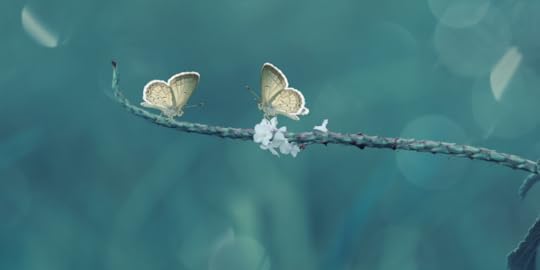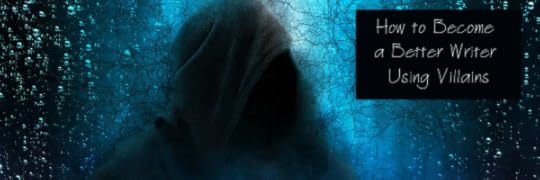T.A. Barron's Blog, page 12
March 19, 2021
How a Butterfly Can Change the World

The Butterfly Effect is one of my favorite concepts. In fact, I’ve even written about the power of a butterfly’s wings in my novel, Heartlight. If you’re unfamiliar with the Butterfly Effect, it is a theory of causality in physics which states that everything in the universe is connected — in ways so subtle and complex that we cannot even begin to understand. Yet those connections are, in truth, very powerful. The name “Butterfly Effect” comes from the metaphor that, if we could understand all the connections that exist throughout our universe, we could see how the merest flutter of a butterfly’s wings on planet Earth could reach beyond the atmosphere and affect the motion of different stars.

Like that humble butterfly, we as humans are all connected to each other, to nature, and to every part of the universe. We all belong to the same human family, we are each a member of the community of species, and our fate is connected to the health of our planet. And inside each and every one of us resides an amazing power — the power to make choices. What we do with our time, what we care about, how we treat others… all these are choices we make daily.
One of the choices we should all be making? To live as responsibly as we can. The natural world holds enormous powers of resilience: it will survive, with or without us. What we need is a chance for us to survive as well. And something more — a chance to rise to a higher level. To embrace long-term wisdom over short-term greed. To be our best selves as stewards of the Earth. Choose to take a greener and more sustainable path in life to ensure that our planet, our home, will do more than survive. Give it a chance to thrive!
10 Small Changes You Can Make to Protect the EnvironmentI can’t quite give up on this home planet of ours. Yes, it is beleaguered and trashed and attacked on every level. That, we know beyond doubt. But it is also full of enduring wonder, beauty, and mystery — a place that nourishes us physically and spiritually, every single day. Here are a few small ways that you can be a butterfly and let the flutter of your wings positively affect the future of the world.
Create less waste.Our landfills are overflowing with single-use plastics and other non-biodegradable materials that end up in our oceans, threatening the beautiful and mysterious creatures that dwell there. Taking small steps toward a zero-waste lifestyle goes a long way toward helping the environment. Try some of these tips:
Skip the plastic water bottles by substituting them with a reusable glass water bottle.Bring your own reusable grocery bags to the store.Buy loose produce and avoid using a bag altogether.Reuse items that would otherwise end up in landfills.Recycle, recycle, recycle. Reuse greywater.Greywater is the water leftover from a bath, laundry, washing dishes, brushing your teeth, or even cooking. Shreya Ramachandran, a 2018 Barron Prize Winner, founded The Grey Water Project to help educate and inspire people to reuse water and lessen the effects of drought. Although this water is not potable, by switching to natural soap and cleaning products it can be reused for:
Watering plantsFlushing toiletsCleaningAnd many other possibilities! Encourage bees.Bees are among the best pollinators with the most important jobs — helping plant life to thrive. Without bees, there would be limited flowers and even fewer fruits and vegetables. A few ways to help the bees include:
Not using pesticidesGrow local, native plantsPlant in sunny spots where bees are most likely to visit Plant a tree.Trees contribute to the environment by providing oxygen, improving air quality, conserving water, preserving soil, and supporting wildlife. Not to mention, they are magical, majestic beings with histories and stories that we could only imagine. We should all be planting trees!
Grow your own food.Produce has to travel long distances before it ends up on your grocery store shelves, relying heavily on fossil fuels. By growing your own fruits and vegetables, you can help reduce these practices that are harming the environment. When you grow your own food, you can also eliminate chemicals and pesticides while encouraging bees and other insects to visit. One of the 2004 Barron Prize winners and inspiring young hero, Shawn Henry, created Garden Angels — a nonprofit organization that transformed an abandoned, trash-filled vacant lot into a park and community garden. Community gardens are a wonderful way to divide the responsibilities of gardening while also sharing fresh and delicious fruits and vegetables with your neighbors.
Unplug.Appliances, chargers, lights… if you’re not actively using them, unplug them! This will not only help you save on your electricity bill but will also help reduce your carbon footprint. If possible, switch to renewable energy sources like solar energy.
Walk when you can.Or bike. Or use public transportation. Carpool to work. Any way that you can help reduce the amount of fossil fuels used daily is a positive change for the environment.
Make your voice heard.Speaking up is one of the most powerful things you can do toward saving the planet — especially if you’re speaking to the right people. Be informed, be politically active, and stand up for environmental rights. Ways you can help include:
Signing petitionsCalling or writing to your government officialsVoting for leaders who will fight with you to protect the environment Find ways to donate or volunteer.There are many organizations with the sole purpose of protecting and saving the environment. Get involved with one of the organizations to lend a hand, literally or financially, toward a better Earth. A few of my favorites include:
Save the Redwoods LeagueWildlife Conservation SocietyOceanaThe Wilderness Society Inspire young heroes .I passionately believe in the power that young people have to change the narrative of the future. It is our job as parents, teachers, and role models to foster a love of nature and hope for a brighter future in our young people — not only by telling them stories of young heroes and encouraging them to follow their passions but also through leading by example.
No effort is too small. Be like that tiny butterfly and allow the changes that you make today create the world you want to live in tomorrow.
The post How a Butterfly Can Change the World first appeared on TABarron.com.March 2, 2021
Nature as a Character

Making characters come alive is one of the trickiest but most important elements of writing. Before I start to write, I usually take extensive notes about each character. I then expand that description even further as I get to know them better throughout each draft. When I see how they look in my mind and can hear their voice echoing, then I know I’m close to knowing who they are. But it’s not until they lean close and whisper to me their innermost secrets — their deepest fears, their highest hopes, and their innermost longings — that they are truly real. The most interesting characters, at least to me, are the ones who are complex and have many intricate threads woven into the tapestry of their story.
Nature plays a crucial role in all my books. In fact, I’d go so far as to say that I treat the natural world not merely as a setting, a backdrop for my stories — but as a full-blown character. Places are alive, just like you or me! They have moods, histories, and qualities that can be bizarre, humorous, tragic, mysterious, or inspiring. Part of my job as a writer is to make those places so real, so sensuous, so fully alive, that readers want to voyage there again and again. Once I feel like my readers will be able to fully connect with these magical places, I begin to weave environmental themes and awareness into the stories.

I truly believe that saving the Earth is about saving our fellow creatures — as well as ourselves. Stories are a wonderful way to convey this idea, sometimes directly and sometimes through metaphors.
The Great Tree of Avalon is a voyage into an imaginary world in the form of a tree. I hope it’s a great, exhilarating adventure for readers — but I also hope that in this journey to a magical world, they will ask crucial questions about how humanity can live sustainably in a different, equally magical world that they already call home — Earth.
My books about the young wizard Merlin — twelve books in all, now translated into more than twenty languages — are really an extended environmental parable. Merlin (much like the guy who wrote the books) learns all his greatest lessons from nature. His elemental magic comes from listening to the language of rivers and trees, flying as a hawk, and running with the deer.
Here’s an excerpt (from MERLIN: The Raging Fires) when he becomes a stag:
“Somehow, in a mysterious way, I was listening not just to sounds, but to the land itself. I could hear, not with my ears but with my bones, the tensing and flexing of the earth under my hooves, the changing flow of the wind, the secret connections among all the creatures who shared these meadows—whether they crawled, slithered, flew, or ran. Not only did I hear them; I celebrated them, for we were bound together as securely as a blade of grass is bound to the soil.”
In The Ancient One, a young woman named Kate tries to save a great redwood tree from loggers — and discovers that this ancient tree holds the answer to a riddle about what really happened to a lost tribe of Native Americans who vanished centuries before. Helped by the tree, Kate travels back in time and learns a lot from those people. And she also learns from the tree itself, whose very breath is a revelation:
As she listened … she heard a rushing, coursing sound, like the surging of several rivers. She realized that it must be the sound of resins moving through the trunk and limbs of the tree. And, strangely, through her own self as well … Back and forth, in and out, always changing, always the same. This was the sound, Kate realized at last, of the tree itself breathing. The sound of life being exchanged for life, breath for breath.
That story, appropriately enough, was inspired by a long walk in the Muir Woods — right before a visit to the San Francisco office of Earthjustice.
My picture book for youngsters that tells a tale of what might have happened on Easter Island, The Day the Stones Walked, and Tree Girl, a story of a brave girl who found that the forest is full of spirits, both encompass the profound ways that nature influences, teaches, and heals us.
Sometimes I take a break from fiction and try my hand at straight nature writing. These books, set in the Colorado wilderness, are really just an excuse for a good hike. (Not that I need much excuse.) I teamed up with an excellent nature photographer, John Fielder, to create books such as To Walk In Wilderness — which can never fully express the wonder and beauty and majesty of this environment, but which I hope convey at least a hint.
I strongly believe it is our responsibility, as humanity, to be stewards of the Earth — to care for our fellow creatures and nature itself — by not only viewing them as the main characters of their own story but as supporting characters in our own.
The post Nature as a Character first appeared on TABarron.com.February 9, 2021
Love of Nature Photo Contest
January 14, 2021
Giving Hope and Giving Back

It takes a community to make a difference. In the spirit of Merlin’s magical word, Generosity, last month I hosted the Giving Hope for the Holidays charity contest, where I encouraged my readers to share charities and organizations making a difference in their communities. I was so touched at all the nominations submitted, and by all the good work your neighbors are doing to make a difference in the world.
Now that the votes have been tallied, I am pleased to announce the winners. Each of these inspirational charities is making their communities better, improving the lives of others, and protecting the environment.
Winners of the Giving Hope for the Holidays Charity ContestHumanitarian Category: Covered With Love, Inc.Covered With Love is standing in the gap of child poverty by providing diapers, disposable training pants, wipes, and baby hygiene products to families in need or in crisis. Its mission is to provide baby hygiene products for newborns, infants, and toddlers, in and around the Wabash Valley community.
Donate to Covered With LoveLiteracy Category: Brooke Erin Posey Foundation’s Little Library ProgramCreated in honor of Brooke Erin Posey in 2019, this foundation serves New Orleans by spreading kindness. One of the ways they do this is with their Little Library Program, a literacy-focused initiative aimed at providing new and gently used children’s books to the existing Little Free Libraries throughout the city of New Orleans and surrounding areas.
Donate to the Erin Brooke Posey FoundationEnvironmental Category: Alaska Wildlife Conservation CenterThe Alaska Wildlife Conservation Center is a sanctuary with a mission of preserving Alaska’s wildlife through conservation, education, research, and quality animal care. They rescue injured and orphaned animals year-round and provide them with spacious enclosures and quality animal care.
Donate to the Alaska Wildlife Conservation CenterHonorable MentionsEach of these charities fill me with hope — for humanity, for literacy, and for nature. I invite you to visit the websites and support the causes of these extraordinary endeavors and make your own difference in the world!
Southwest Wildlife Foundation of Utah
Founded in 1997 in Cedar City Utah, Southwest Wildlife Foundation of Utah is a non-profit organization dedicated to rescuing wildlife, rehabilitation, international wildlife and environmental education, and the development of the Cedar Canyon Nature Park.
The Welman Project connects schools and nonprofits with the community in ways that ignite creativity, environmental activism, and social responsibility.
Canyon Cares’ mission is to serve the residents of their community by providing short-term resources to help care for the necessities and urgent needs. They help their neighbors in Coal Creek Canyon, Nederland, and unincorporated Gilpin County in Colorado’s Front Range.
Fifty Shades of Purple Against Bullying
Fifty Shades of Purple Against Bullying is a community initiative that supports safe spaces and increases awareness about bullying in schools, homes, and in workplaces. They share, encourage, and support anti-bullying campaigns through supportive and informative resources and volunteerism.
Clay County Community for Students
Clay County Community for Students, Inc. is a private, non-profit organization that promotes and facilitates the coordinated delivery of existing resources to children and their families within a school community.
Cherokee County Educational Foundation
The Cherokee County Educational Foundation is a charitable, non-profit organization dedicated to supporting the students and staff of the Cherokee County School District by promoting teaching and learning and celebrating achievements.
The post Giving Hope and Giving Back first appeared on TABarron.com.December 18, 2020
Making a Difference in the World

I believe passionately in the power that young people have to change the narrative of the future, and the most powerful step adults can make towards a better tomorrow is to foster that hope and drive in our young people. Making sure our kids know the stories of our world’s authentic heroes, those people who are truly making a meaningful difference in the world, is one important way to help ensure a positive future for ourselves and our fellow creatures.
My fundamental belief in the energy and enthusiasm of the next generation is one of the reasons I created the Gloria Barron Prize for Young Heroes. During a book tour in 1999, I met some young people who were cynical and discouraged, and who didn’t believe they mattered at all. Speaking to them helped me realize many children need role models that are more real than the fictional heroes in my novels. Today’s young people deserve to hear stories of kids who are really changing the world – people just like them who have not only realized they have the power to do something, but who are using that power to change things for the better. We need heroes today more than ever, and every year the Gloria Barron Prize works to share the stories of real heroic kids with the hope that their stories may inspire others.
Here are a few ideas to inspire children:
1. Talk (and read) to them about people who have made or are making a difference in the world, including historical, fictional, and “real-life” heroes. I have discovered, both in speaking with thousands of students each year and being the father of five children, that nothing is more powerful than stories of real young people who are making the world a better place.
2. Discuss heroic qualities such as courage, commitment, and compassion. Brainstorm what it takes deep inside oneself to “make a difference.”
3. Encourage your children to get involved in volunteer work. Start by identifying what they’re already passionate about — like animals or art or sports — and help them brainstorm ways they could use their skills and interests to benefit others. I have found that many young people — including the most inspiring of our Barron Prize winners — find their service work growing out of their existing interests in this authentic and very personal way.
4. Lead by example. Make positive choices in your own life. Pursue a passion that is also helpful to others in some way. Even the smallest acts of goodness matter.
That last point is perhaps most important — while young people certainly embody our best hope for the future, making a difference in the world isn’t only the responsibility of our children! What we grownups do with our time, what we care about, how we treat others… these are choices we all make daily. Over time, these choices — to check on a neighbor, to treat a stranger kindly, to become part of a caring community — become our footsteps on the trail of life, and those footsteps become our journey, with every choice we make saying something about who we are. Let the story of who you are be a tale of someone advocating for good.
Volunteer for a cause you believe in. One of the most valuable ways you can give back to your community is by donating your time and talents to a cause that means a lot to you.Donate to a charity or organization, if you can. Many resources exist to help you discover causes that are changing the world through their humanitarian or environmental efforts.Inspire children. Teach the next generation to care for their world and all the creatures in it, including their fellow human beings.Spread kindness. Every act of kindness, whether random or calculated, is a source of inspiration to those around us. Spread kindness everywhere you go in the hopes that it will be contagious!
How will you make a difference in the world today?
The post Making a Difference in the World first appeared on TABarron.com.
December 8, 2020
Giving Hope for the Holidays
The post Giving Hope for the Holidays first appeared on TABarron.com.
November 17, 2020
Getting the Most out of Gratitude
I was once asked by a reader, “If you had to choose a favorite word, which would it be?” As a lover of language, I took this question very seriously! After spending some time thinking it over, I gave my answer: If I had to select a single word based on its sound and pronunciation: Mellifluous. But if I were choosing words by their meaning? My very favorite word is Gratitude.

Gratitude — one of Merlin’s seven most magical words — is not just an emotion, it’s also an action. I believe that, in addition to making time within our lives to stop and feel grateful, it’s just as important to show your gratitude towards others. Why? Because the people to whom we are grateful deserve to know how important their work is to us. Often their only reward is the knowledge that they are helping to make a positive difference, so it’s up to us to help repay their efforts with kind words and actions.
When it comes to educators and caregivers, people usually have no trouble thinking of ways to express their gratitude. Nearly everyone can recall someone in their past who helped guide them, spark a new interest, or open new doorways to learning. When I asked my online community to show appreciation for educators, they replied with enthusiasm!
Recalling the positive effect a special dance coach had on her life, Imani Corbin is overwhelmed with gratitude. Describing her mentor Ms. Courtney, she writes, “Though I’m not as close to her as the other girls in my class she welcomed me with open arms and plenty of tough love. She has made me feel so passionate and motivated for things I never believed I could reach. I’ve gained the courage to be a part of something bigger than myself because of the path she set me on.“
Describing her history teacher, Mr. Chandler, Katie Sanders’ gratitude for his skills comes through in every line. She writes, “When I reached my senior year of high school, I began reflecting on who I wanted to become. Around this time was when I decided to become an educator, but I wasn’t quite sure what that meant. I observed several of my teachers, including Mr. Chandler. He inspired me to be the kind of teacher that is flexible, patient, and understanding; to be the kind of teacher that makes a connection with students and leaves a lasting impression. I hope that someday I will inspire my students just as he inspired me.“
My heart is warmed by the number of ways people are helping show gratitude to those in front line positions. These are the skilled and committed people who we often take for granted will ‘just be there’ for us in case of emergency or crisis, and their important work deserves to be acknowledged and celebrated.
Laura Davidson writes, “If I see anyone in uniform I always say ty! And tell them how grateful I am they put their lives on the line each and every day! Nurses, cops, firefighters, doctors, veterans, anyone who has risked their life and does every day is a hero in my book! Thanks from the bottom of my heart!“
MJ Lynn tries to offer front-line workers small kindnesses, like a listening ear, a pleasant word in passing, or a small treat if she can. She writes that she expresses her thanks by “thanking them when I pass them in the store, but I have on occasion paid for their coffee if I see them in front of or behind me in line. Spend a couple of minutes with them talking about something that isn’t their life on the front lines.“
Jasmin Fisher suggests that one idea anyone could use to show support for front-line workers is by “writing thank you to them with colorful sidewalk chalk drawings that let them know how we feel.” What a creative and fun way to get the whole neighborhood thinking about the ways front-line workers improve life for all of us.
This time of year always inspires a particular feeling of gratitude in the hearts and minds of everyone. Perhaps it’s the proximity of the giving season, or simply the hope to make a difference in the lives of another person, but whatever the cause, now is the perfect time to not simply contemplate our numerous blessings, but also ensure our thanks is expressed warmly, with an open, giving heart.
I am sincerely grateful for all the members of my online community who have taken the time to share their special ways to express gratitude this season. I hope you’ll join me in taking time now, and throughout the seasons to come, to truly both appreciate and communicate your gratitude to those around you.
The post Getting the Most out of Gratitude first appeared on TABarron.com.
October 20, 2020
How to Become a Better Writer Using Villains

I often receive letters and messages from fans asking for writing advice, and I do my best to point them toward the many resources for writers on my website. But as we move closer to Halloween, I thought I’d offer those seeking advice on becoming a better writer a new tip: get into the spirit of the spooky season and consider some of the ways villains can improve your writing!
How Villains Help You Write Better Characters
Villains require you to dig deep into your character’s past and motivations
By giving complex motivation to your villains, as well as your heroes, you can give a greater sense of realism to your characters. A multi-faceted villain is a more compelling villain. I would even go as far as to say you ought to give just as much thought into the personality of your antagonist as you do to your main character!
For me, getting to know my characters — heroes and villains alike — as thoroughly as I would a real person is key. I usually make extensive notes about each character before I start to write then expand that description as I get to know them better with every draft. When you see how they look in your mind, and can hear their voices echoing, then you’ve begun to know who they really are. But it’s not until they lean close and whisper to you their innermost secrets — their deepest fears, their highest hopes, and their innermost longings — that they are truly real. Then I rewrite, rewrite, and rewrite — researching whatever is required to make my story feel true. Remember: the better you understand who your villain really is, the more real they will be for the reader, and the more vivid the hero’s stakes become.
Villains allow you to explore contrasts within your writing.
A funny thing about our world is that where the light shines brightest, the shadows are often the darkest. And just as shadows begin where the light ends, exploring how different a hero is from her nemesis can be a great way of highlighting a character’s darker elements. For example, Merlin’s encounter with Stangmar in Book 1 of the Merlin Saga reveals the king to be a terrifying, ruthless, corrupted old man, filled with anger and greed — which makes him all the more a villain when contrasted with the kindness and innocence of the young hero.
Another excellent way to highlight the darker parts of a character is to explore their internal contrasts. Perhaps your villain claims to have a good purpose, but his actions reveal an ulterior motive; or maybe your character’s pure and virtuous backstory contrasts sharply with her current life of villainy. An antagonist who inflicts terrible pain on the hero but who also spends their free time volunteering to help injured animals is a much more interesting character than someone who is simply evil through and through.
Villains help unleash your creativity.
I find that, even beyond what they contribute to a story, villains can be lots of fun to write about! When you fully explore the inner lives of the characters you create, there can be a real sense of freedom when developing a character to whom the normal rules of society simply don’t apply. The best villains are the ones we love to hate, and developing their malevolent characteristics can really stretch the limits of a writer’s imagination. And just as writing allows you to enjoy places you may never visit or eras you don’t live in, you might just find yourself basking in the freedom to dream up new, deliciously wicked plans for your antagonist.
Part of the magic of writing is that it gives us nearly unlimited freedom to focus on the stories we love, featuring the very best shadowy souls, heroic figures, or otherworldly settings we can dream up. Despite that freedom, however, the trick to improving as a writer is not so different than learning any other skill: no matter how much raw talent someone begins with, becoming better at anything takes practice, discipline, and persistence. Through my years of writing, I have found that it is the hardest — as well as the most joyous — work I’ve ever done… and it’s that joy that makes all the hard labor worthwhile. So no matter what you choose to write about — villains or heroes, fiction or non-fiction — I encourage all you aspiring authors to stay with your writing, no matter how many rewrites it takes to get it right!
The post How to Become a Better Writer Using Villains first appeared on TABarron.com.
October 8, 2020
Once Upon a Villain
The post Once Upon a Villain first appeared on TABarron.com.
September 22, 2020
How Do You Spread Kindness?

I believe that kindness is an altogether different entity from being nice. The sad truth is that you can be nice out of politeness while still thinking mean thoughts. However, to truly be kind, you must care about your fellow man (or woman!), all the creatures of the world, and nature itself. Kindness comes in many forms, including acts as simple as smiling at a passing stranger and as heartfelt as profound acts of charity and service.
Each act of kindness we perform is an inspiration to others. There’s an old adage that charitable acts ought to be done in silence, but I disagree. Leading by example is often the best way to encourage those around you, so be open about your acts of goodwill without being boastful — tell others what you’re doing to help make the world better, and you’ll be sure to inspire a few to follow your path!
Because I feel so strongly about inspiring others through our actions, I’ve recently asked my readers to share the kind things they are doing to make a positive difference in the world. I’ve been so impressed to read each of their labors of love and how they are working to spread hope and goodwill in their communities.

In What Ways Are You Spreading Kindness in Your Community?
As someone who works in schools, Cassandra R. has plenty of opportunities to practice her labor of love through the students she encounters. She writes, “My profession is a lunch lady. I love my job and the kids are #1. I started out when the pandemic started doing my part helping with sack breakfasts and lunches for the students[…] A lot of students depend on us to be fed. I know my life is better having them in it.” A marvelous example of how a part of life so many take for granted can truly make a positive difference.
Jennifer W. understands the importance of our frontline workers and how crucial it is to protect them. She writes, “I donated over 80 pounds of fabric and elastic to ladies making face masks for medical professionals.” Her kindness makes a huge impact on the lives of others.
Kathleen M. reminds us all that sometimes it’s the little things that can make a difference. She writes, “I try to treat others with kindness in my daily life—whether it’s a smile, card, e-mail…” A small word of kindness is still a tremendous labor of love.
A mental health therapist, Marissa J., actively seeks out additional training to help families heal from trauma. She writes, “I know I can’t save them all, but at least they know they’re not working through the pain alone.” Sometimes, knowing that someone is there is enough to make a difference.

Another example of true kindness comes from Ella K., who made twenty tie blankets for children in hospitals. Because she had the first-hand experience of being a child that had to have surgery, she knows the comfort that a special blanket can bring during a miserable time. She writes, “I wanted to give back, so I’ve spent my own money and time to make as many blankets as I could to help those kids in need […] My goal is to make 50 by the time I graduate from high school, and I know I’ll get there.” I believe in you, Ella, and am proud of your ambition and amazing heart!
Occasionally, a small labor of love can turn into a life-changing experience. Joni H. used to work in business, but would take their guitar to do sing-alongs with hospital patients. She writes, “During that time, I came to believe I wanted to be a full time ‘helper,’ so I went back to school to become a psychiatric technician. Ultimately, I worked in a state hospital for over 30 years.” During that time, Joni was able to help hundreds of people to have a better life when they got out of the hospital. A lifetime of kindness, born out of love — an inspiration to all of us.
Cheryl M. from Australia has a meaningful life philosophy, “practice random acts of kindness.” She writes that she tries to do at least one each day, no matter how small. Such a beautiful way to add meaning to your life!
Among all the amazing stories of goodwill you shared, I was touched at the number of people whose work was aimed at showing kindness for our fellow creatures. “I recently conquered my fear of snakes to take care of Cosmo, a friend’s ball python, for a month while his family had to return to a different country for a health emergency,” writes Annika L. “I didn’t think I liked snakes very much prior to meeting Cosmo, and I was honestly a little afraid of handling him, but I was soon proved wrong! Cosmo’s sweet and gentle and really likes exploring. I was reminded that we all have prejudices and presuppositions about others, but they can easily prove us wrong if we give them the chance…” Great work, Annika!
Each act of kindness we make is an inspiration to others. In the words of Princess Diana, “Carry out a random act of kindness, with no expectation of reward, safe in the knowledge that one day someone might do the same for you.” How will you spread kindness today?
The post How Do You Spread Kindness? first appeared on TABarron.com.



